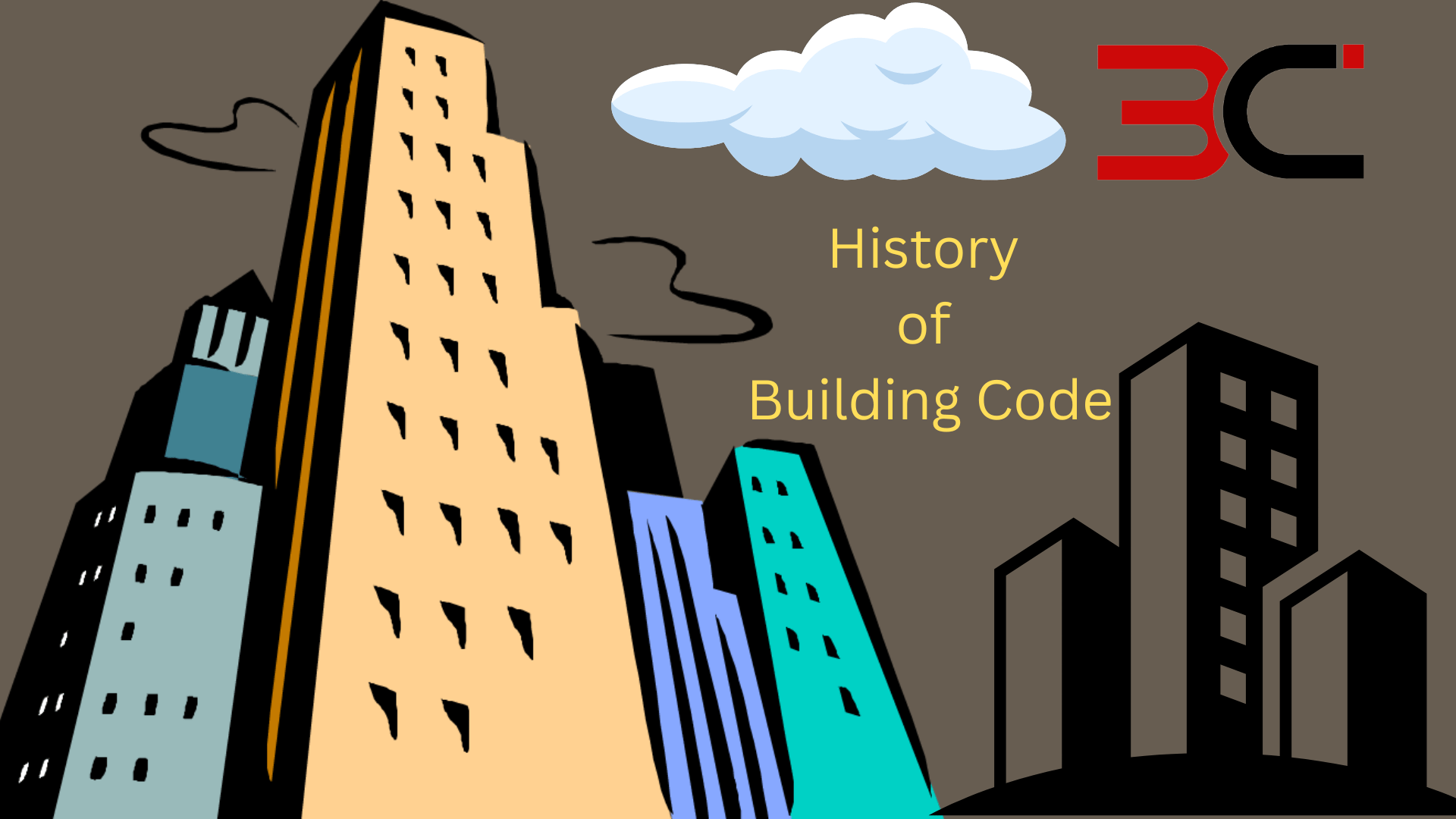After being enacted for the first time in 1850, the Uniform Building Code has been shown to be a remarkably responsive code.
Talking about the history of building codes, no major changes came after 1968, aside from a few adjustments and rule implementations. From the acknowledgment of the Department of Buildings Commissioner, Patricia Lancaster, modifications of codes and rules have changed, creating an unindexed and hard-to-access document.
One of the most significant changes since 1968 is the expeditor’s insertion of a cost layer that includes sleazy exposure. In this article, we will cover a lot of fascinating and amazing details regarding the history of building codes.
At A Glance: The History of Building Code
The Code of Hammurabi, written between 2200 and 1800 B.C., is the ancestor of today’s building regulations. The Hammurabi Code stipulated that if a building fell during construction and the owner died as a result, the builder would also perish.
According to the book of Deuteronomy (Deut. 22:8),
- All homes must be built with parapets to prevent people from falling over the roof.
Building codes change in response to the context in which they are used. Their primary goal is to set fundamental standards for well-being, safety, and health. Such codes are impacted by the climate, catastrophic occurrences, and aesthetics. The code has changed as a result of issues that draw public attention.
Once a building was finished in 1980, the municipal law was finally in operation. Another change was introduced in 2004 and required building owners to submit inspection reports for their properties every five years. Emergency action plans, sprinklers, and exit signs were mandated by local law in 1998 for all structures.
Since the building code was established in 1850, the Uniform Electrical Code and the Uniform Plumbing Code have also undergone various modifications. The Uniform Electrical Code mandates that all new structures must be wired in accordance with the correct guidelines.
Types of Building Codes
There are hundreds of building codes. Day by day, the number of building codes is growing for various needs. The type of building codes may be generated based on the region, necessity, and regulation. Among many building codes, we will break down the most common ones –
- National Building Code (NBC) –
In certain nations, the government enforces building rules nationwide once they have been produced by government agencies or quasi-governmental regulatory agencies. These regulations are referred to as national building codes.
- International Building Code (IBC) –
The International Code Council (ICC) created the International Building Code (IBC). The majority of American jurisdictions have embraced it for usage as a base code standard. The IBC points to issues related to building health and safety.
- Model Building Code –
It is a set of building regulations that are created and upheld by a standards committee. This committee is independent of the authority in charge of implementing the building regulations. An example of a model building code is the IBC.
- Euro Code –
The European Committee for Standardization created the 10 Euro codes, which outline the best practices for structural design throughout the European Union.
- Canadian Code –
The Canadian Commission on Building and Fire Codes, which developed the Canadian codes, establishes the technical specifications for the design and construction of new structures in addition to the alterations, conversions, and destruction of existing ones.
- BS Code –
British Standards, often known as BS codes, are developed by the BSI Group, an organization with a royal charter. For structural and civil work, there are numerous different BS codes. Formally, the BSI Group had the title of National Standards Body (NSB) in the UK.
- BNBC Code –
BNBC stands for “Bangladesh National Building Code.” The code was initially released in 1993 to control building construction, manage, and sustain them to certain requirements.
- IS Code –
Indian Standard (IS) codes are a list of guidelines needed for the analysis and design of construction projects used by civil engineers in India. There are different IS codes for various structures, including houses, bridges, roads, trains, and airports.
- ACI Code –
The ACI code outlines suitable procedures for designing and building reinforced concrete structures. Building codes of governmental entities and agencies make reference to the ACI Building Code and incorporate it into their own specifications as a result.
Building Codes in Different Parts of The World
In 1788, the earliest official building code was ever recorded in Old Salem, North Carolina, USA. Surprisingly, it was written in German. In the 18th century, building rules were first established in larger American communities. In 1865, New Orleans became the first city to implement a statute requiring public place audits.
The Seattle Building Code and the Chicago Building Code of 1875 were among the originators in the US. In 1915, the Building Officials Conference of America, or BOCA, was established. Since it was formed in 1938, BOCA has mainly been a development of insurance interests. The BOCA National Building Code is the name given to this regulation today.
The construction rules included in the California Building Standards Code are state laws that have been approved by several state agencies. These codes are controlled by the state’s Executive Branch. These rules mandate that construction standards be developed in line with state laws for certain building kinds, pieces of equipment, and features.
Instead of a formal code of law, Greek and Roman construction laws were composed of a number of particular regulations guiding commercial agreements.
Large apartment towers were built in Paris as part of the Second Empire’s restoration of the city, with a maximum building height restriction of five or six floors.
“Henry Fitz-Elwyne’s Assize of Buildings” is arguably the most important antecedent to the modern building code, which was published in London in 1189.
Building Codes in Current Times
Following World War II, the federal government became more involved in state and municipal affairs, which increased the inspection of the building codes and guidelines that were already in place. The total lack of consistency across federal agencies, counties, and states is one of the most perplexing features of building regulations.
The construction sector has long pushed for the deployment of a single, uniform building regulation scheme across the country. The International Code Council (ICC) was founded in 1994 as a nonprofit group. It focused on creating a single set of coordinated and completed national model construction codes.
Nevertheless, significant national efforts to synchronize codes have been made in recent years. As a result, model codes are now recognized in more than 85% of the states.
Figure: Complexity of current building code standards (Source: Specifications for Commercial Interiors by S.C. Reznikoff)
Aside from that, various organizations and agencies are introducing methods to generate building codes that are more feasible. For instance, ASTM International is a worldwide standards organization for creating and disseminating voluntary technical standards for a wide range of materials, goods, services, and methods. The organization is also known as the American Society for Testing and Materials.
Similarly, a foundation for a mutual understanding of the valid requirements for dealing with structural steel is provided by the AISC Code of Standard Practice. As a result, it is beneficial to everyone involved in structural steel building.
There are other voluntary organizations emphasizing civil engineering work. Over 150,000 individuals in the civil engineering profession from 177 different nations are represented by the American Society of Civil Engineers (ASCE). The society was founded in 1852, which makes it one of the oldest engineering societies in the country.
Similar to this, the Federal Emergency Management Agency (FEMA) makes use of the federal government’s enormous capability for coordination to ensure that America is prepared to prevent and react to catastrophes. It has 10 field offices and over 20,000 employees nationwide.
The Bottom Line
The history of building codes has seen numerous changes over the years. The building codes have also been changed in order to establish universal standards for all production facilities. Due to the rapid expansion that was occurring in the majority of countries in the 1990s, changes were made to the regulations governing factory structures. At that time, industrial homes might be constructed through legal processes according to International Building Codes.
The United States uses its own national building codes, in contrast to other nations that use national codes that are implemented everywhere. Some jurisdictions continue to uphold outdated laws, while others have their own distinctive laws, and others still don’t enforce any laws at all.
Although international construction standards are rapidly used in the United States, not everyone is adopting the same set of regulations.

